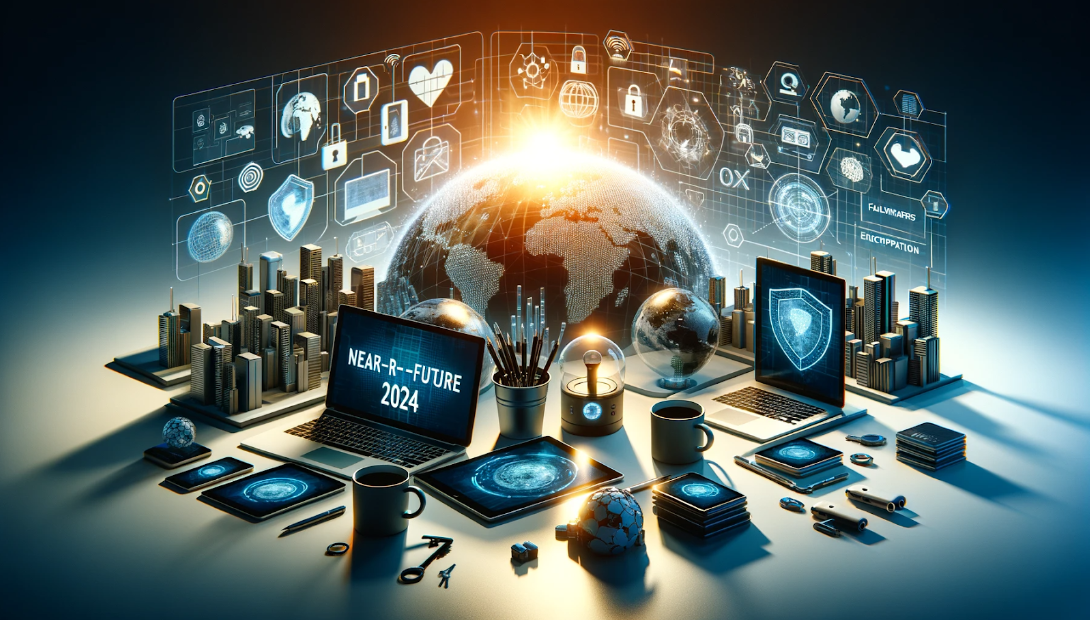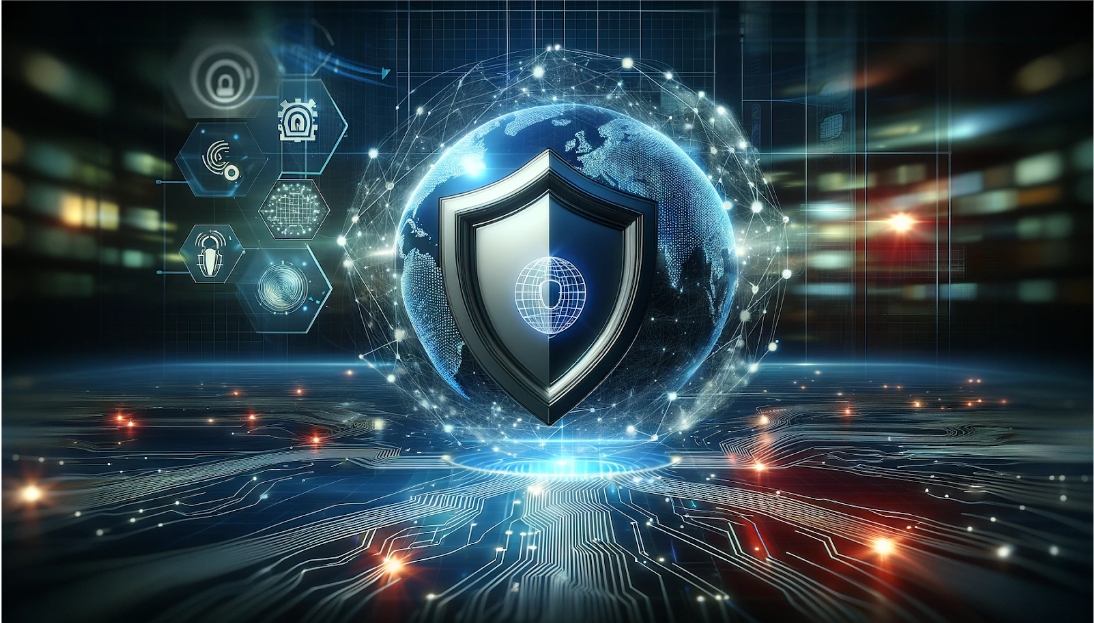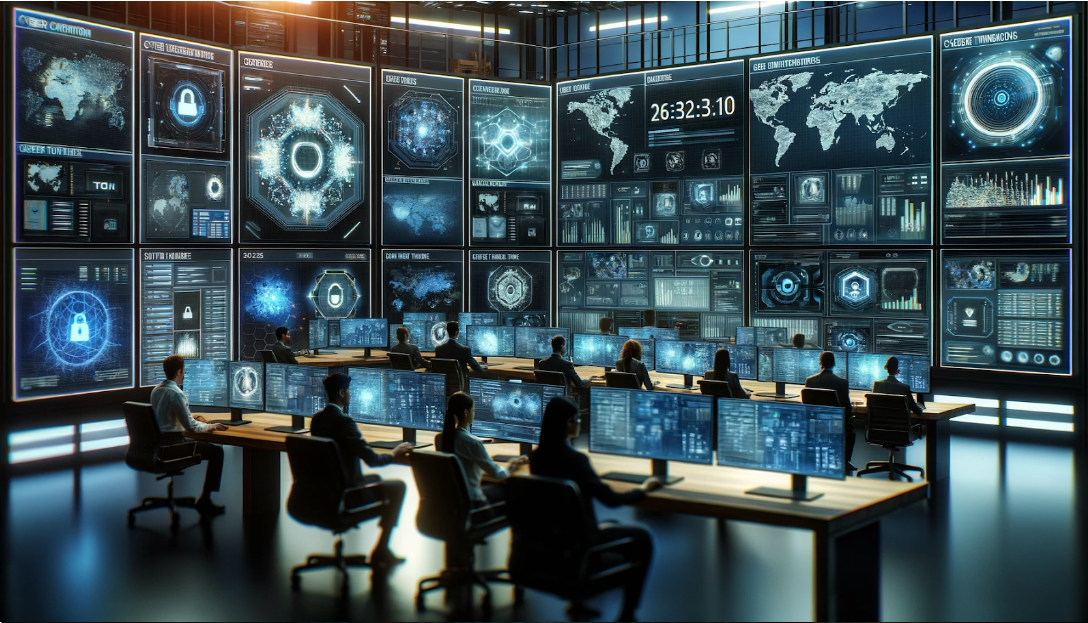Cybersecurity in 2024 and Beyond! Navigating the Future Digital Landscape Safely

In the ever-evolving world of digital technology, staying ahead of cybersecurity trends is not just advisable; it's imperative. As we step into 2024, several key trends have emerged, reshaping how businesses and individuals protect themselves against cyber threats.
The Rise of AI in Cybersecurity
Artificial Intelligence (AI) continues to be a game-changer in cybersecurity. With its ability to quickly analyze massive datasets and identify potential threats, AI is becoming an indispensable tool in the fight against cybercrime. However, this also means that cybercriminals are using AI to develop more sophisticated attacks. Businesses must stay vigilant and equip their cybersecurity arsenals with advanced AI tools to keep pace.
The Growing Importance of Endpoint Security
With remote work becoming the norm, endpoint security has become more critical than ever. Each device that connects to a company's network potentially opens a door for cyber threats. Companies must adopt robust endpoint security measures, ensuring that all devices comply with security standards, regardless of their location.
Increased Focus on Cloud Security
The shift to cloud computing continues to accelerate, highlighting the need for robust cloud security measures. Organizations are increasingly adopting a 'cloud-first' approach, but this shift requires a reevaluation of traditional security strategies. Embracing tools like Cloud Access Security Brokers (CASBs) and implementing stringent access controls are key steps in securing cloud environments.
The Persistent Threat of Ransomware
Ransomware attacks have become more targeted and damaging. In 2024, expect to see ransomware continue to pose a significant threat, especially to small and medium-sized businesses. Regular backups, employee training, and a solid incident response plan are essential defenses against these attacks.
The Emergence of 5G and Its Security Implications
As 5G technology rolls out, it promises faster connectivity and new business opportunities. However, it also brings new security challenges. The increased number of connected devices and the vast amount of data they generate require enhanced security protocols to prevent data breaches.
Recent Global breaches - What can we learn?
Here are several significant real-world cybersecurity breaches from the previous month that involved substantial damages to the affected organizations:
- TransForm Shared Service Organisation (Canada): The Daixin Team claimed responsibility for a cyber attack on TransForm Shared Service Org, impacting five Canadian hospitals in Ontario. This led to the cancellation or rescheduling of surgeries and appointments in some cases, and attackers stole a database containing information on 5.6 million patient visits.
- Outcome: This breach led to a potential $480-million class action lawsuit after at least 270,000 patients had their data breached and reportedly sold on the dark web. The Ontario Provincial Police and the U.S. FBI launched a criminal investigation into the incident.
- The Industrial and Commercial Bank of China (ICBC) - U.S. Arm: ICBC's U.S. arm was hit by a ransomware attack that disrupted trades in the U.S. Treasury market, indicating the far-reaching impact of such attacks on financial markets.
- Outcome: The ransomware attack temporarily disrupted U.S. Treasury markets. ICBC ended up paying the ransom, raising concerns about the vulnerability of leading banks and the need for higher cybersecurity controls worldwide.
- Toronto Public Library (Canada): The Toronto Public Library confirmed the theft of personal information of employees, customers, volunteers, and donors from a compromised file server during a ransomware attack by the Black Basta group.
- Outcome: Post-breach, the library is dealing with service issues, with systems remaining offline until January 2024. Personal information of TPL staff and others dating back to 1998 was affected. The library did not pay the ransom and is aware that some of the stolen data may end up on the dark web.
- Toyota Financial Services (TFS) - Europe and Africa: TFS detected unauthorized access on some of its systems after an attack claimed by the Medusa Ransomware group. The attackers demanded a ransom of $8,000,000 for the deletion of data allegedly stolen from the company.
- Outcome: The company confirmed the ransomware attack but did not disclose if any data was stolen. The extent of the damage or the resolution of the breach was not detailed in the available information.
Why is SOCaaS More Important Now Than Ever Before?
Navigating the digital landscape safely in 2024 requires awareness and proactive measures. By understanding these trends and implementing robust cybersecurity strategies, businesses and individuals can significantly reduce their risk of cyber threats.
In an era where digital security and efficiency are paramount, Z7 Solutions emerges as your ideal partner, offering cutting-edge Managed IT Services tailored to your unique needs.
Our prowess extends beyond conventional IT solutions, specializing in Managed (Security) Services that encompass everything from Help Desk support to advanced infrastructure management.

At the core of our service is a robust commitment to security. Our sophisticated Remote Monitoring and Management (RMM) system is equipped with state-of-the-art sensors that vigilantly monitor all endpoints. This ensures a secure, stable IT environment, continuously safeguarded against evolving cyber threats. Our monthly reports provide a comprehensive overview of your IT health, keeping you informed and one step ahead of potential risks.
Flexibility is key in our approach. We offer tailored coverage options, whether per user or per device, ensuring the most cost-effective and efficient solution for your organization. Our services are complemented by on-site and on-demand engineering support, designed to meet your specific requirements.
As a leading Managed Service Provider (MSP) in Orlando Florida, we understand the significance of staying ahead in the cybersecurity race. Our unique strategy integrates advanced sensors with our 24/7 Network Operations Center (NOC) and Security Operations Center (SOCaaS), forming a robust defense against cyber threats. This multi-layered approach is crucial in a landscape where cybercrime costs are projected to reach $10.5 trillion USD annually by 2025.
Z7 Solutions is not just a Florida MSP provider; we are your strategic partner in ensuring the security and efficiency of your IT infrastructure. Our customers stretch globally. Let us show you how our managed services, backed by our advanced sensor technology and MSP expertise, can fortify your digital assets against the complexities of today's cyber threats. All of our tools have advanced SOC 2 audit reports available upon request.
For a detailed exploration of our capabilities and to discuss a tailored IT solution for your organization, visit https://z7solutions.com/capability-statement/.
For a personalized discussion on how we can meet your unique needs, please reach out for a conversation or book an appointment directly on our CTO’s calendar: https://calendly.com/zack-aleksic/1-1-meeting-with-z7solutions.
Stay informed, stay protected, and let us be your partner in navigating the challenging cyber landscape.
Warm Regards,
Z7 Solutions Support Team
![]()

References:
canhealth.com
gfmag.com
toronto.citynews.ca
malwaretips.com
cybersecurity-review.com
Exploring the Various Forms of Malware
Malware, short for malicious software, refers to harmful programs designed to infiltrate and damage computers or networks without detection. Common types of malware include viruses, adware, spyware, ransomware, worms, and Trojan horses. These variants pose significant threats to computer systems, prompting cybersecurity firms to continually seek and neutralize these harmful codes.
Each malware type operates uniquely, posing distinct dangers. Here's an overview of various malware types and their characteristics:

Viruses:
- Purpose: Self-replicating software activated upon execution
- Risk: Data corruption or deletion
- Common Sources: Email attachments
Adware:
- Purpose: Displays unwanted advertisements, typically as pop-ups
- Risk: Server corruption, internet access disruption
- Common Sources: Web downloads, unwanted programs
Spyware:
- Purpose: Stealthily attaches to the operating system
- Risk: Gathers various types of personal information
- Common Sources: Agreed upon terms and conditions
Ransomware:
- Purpose: Crypto-virology based software that locks users out of their files
- Risk: Denies file access until a ransom is paid
- Common Sources: Email attachments, downloads
- Note: Illegal activity
Worms:
- Purpose: Exploits vulnerabilities to spread virus-like
- Risk: Network damage, bandwidth overload
- Common Sources: Vulnerable code exploitation
Trojans:
- Purpose: Disguised as legitimate software, activated upon interaction
- Risk: Various forms of computer damage - disruption, theft, infection
- Common Sources: Seemingly normal social media ads, web links
This summary highlights key aspects of these malware types, each equally concerning when infecting a computer. Additional malware forms, such as Botnets, Rootkits, and Spam, also exist.
Initially used for pranks and experiments, modern malware is invariably destructive. Cybersecurity firms employ tools like SIEM (Security Information and Event Management) solutions to combat these threats. Immediate consultation with a cybersecurity company is advised upon malware detection.
Beyond malware, other online threats include spoofing, phishing, and various hacking techniques. Proactive measures and expert consultation are essential to identify and mitigate these threats.

